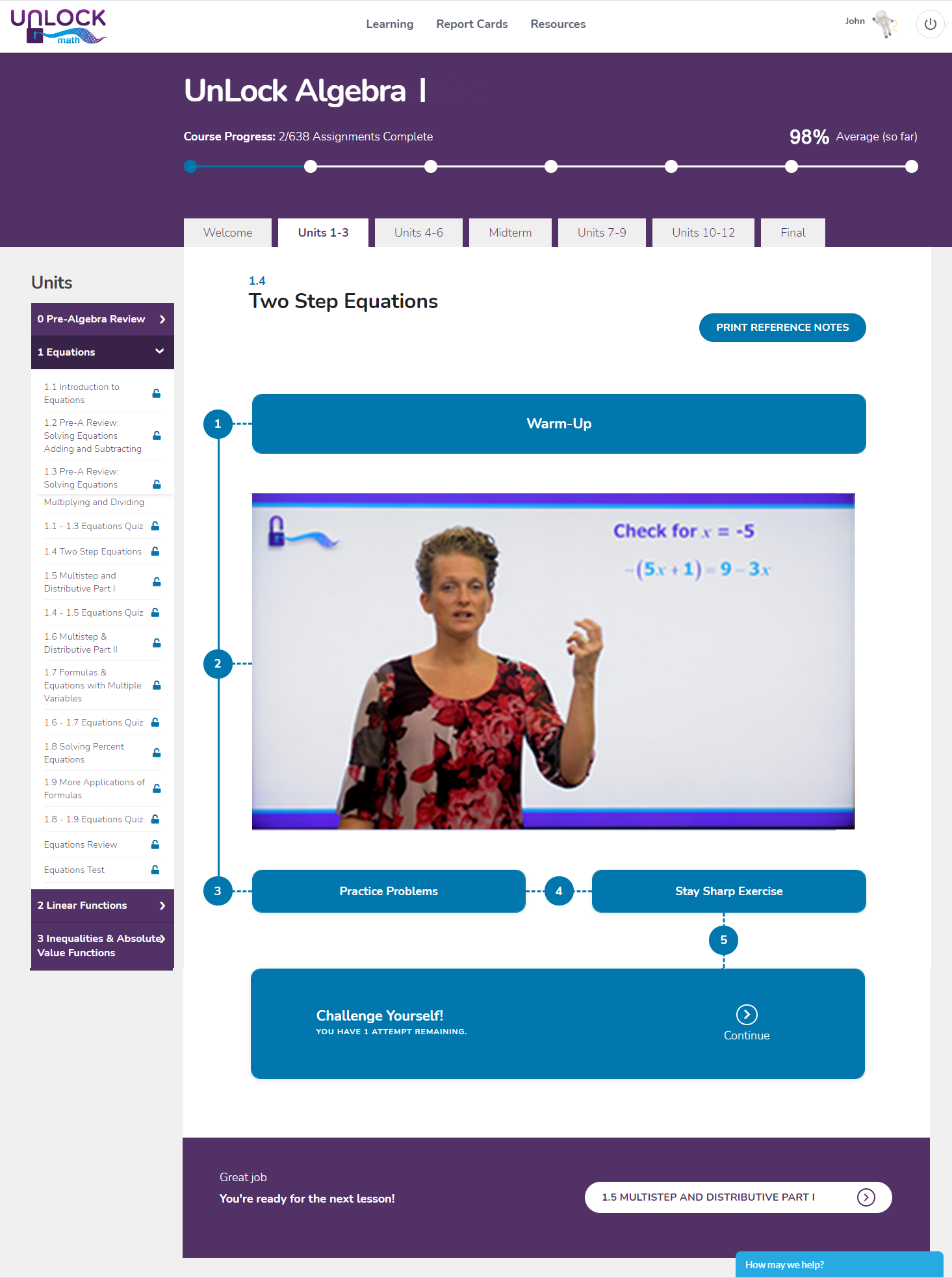For Schools
Our academically challenging and high-quality courses have been AG-approved and certified by the University of California!
.png)
.webp)
In September of 2018, Unlock Math, after undergoing a thorough months-long review process to evaluate academic quality and rigor, had its courses approved by the Office of the President of the University of California. This A-G certification by the University of California is necessary for curricula to be used by California high schools and districts and represents one of the highest certifications available to high school curricula. To achieve UCOP A-G approval, courses must be academically challenging, involve substantial reading, writing, problem and laboratory work (as appropriate), and show serious attention to analytical thinking, factual content, and developing students’ problem-solving skills.
Approved Unlock Math courses include Unlock Algebra I A-G, Unlock Geometry A-G, Unlock Algebra II A-G, and Unlock Pre-Calculus.
.png)
.png)
An online math curriculum that's effective, engaging, and measurable exclusively for schools.

Brings students of all skill levels to the knowledge required for Pre-algebra. Useful as an intervention math course and/or grade 6.
Pre-Algebra builds off of Foundations and prepares students for a successful algebraic education. Unlock Pre-Algebra will explain complex ideas in an easy-to-understand method. The course reviews integers, fractions, decimals, percent, and geometry while introducing new topics to students.
The course begins with an emphasis on linear equations, functions, and inequalities before introducing more advanced functions. Topics covered in these units include:
Non-linear functions, including quadratic, exponential, rational, and radical functions, make up the bulk of the subject matter in the middle of the course. These units cover operations with exponents, exponential decay and growth, graphing, factoring and solving quadratic functions, graphing and analyzing radical and rational functions, and transformations of various functions. Other important topics, such as systems of linear equations, trigonometry, sequences, and statistics, round out the end of the course curriculum. Topics in these units include:
This course covers logic and reasoning, distance and length, angles, polygons, circles, perimeter, area, the coordinate plane, transformations, trigonometry, volume, surface area, and probability. Students will use logical thought processes to prove theorems involving segments, lines, angles, triangles, and circles. Students then use these theorems to analyze and solve problems with these geometric figures. They use the coordinate plane to view geometry with a more analytical perspective. On the coordinate plane, students will calculate distances, slopes, area, and perimeter and perform transformations on points, segments, and polygons. They also learn to find the surface area and volume of three-dimensional objects and solve application problems.
Lastly, students study probability and make analytical decisions based on calculations involving independent and dependent events, the fundamental counting principle, compound probability, set theory, permutations, and combinations.
This course is best taken between Algebra I and Algebra II. While not a direct successor to Algebra I, Geometry requires that students have a strong foundation of algebraic skills to manipulate equations and solve problems in Geometry. By completing Geometry, students become better prepared for Algebra II, improving their problem-solving skills, abstract and critical thinking, spatial awareness, and logical reasoning.
Unlock Algebra II is the direct successor to Unlock Algebra I and builds on the concepts studied within it. An emphasis on functions returns as the functional families learned in Algebra I are examined in more detail. Algebra II expands on quadratic, polynomial, exponential, radical, and rational functions and introduces logarithmic functions.
Students learn how to use and operate complex numbers so that complex solutions of quadratic and polynomial functions can be considered. After studying these functions, the focus shifts to more advanced algebraic concepts such as conic sections, trigonometry, series and summations, and statistics. Students examine the properties of parabolas, circles, hyperbolas, and ellipses and write equations representing each. They also study advanced applications of trigonometry, including graphing the reciprocal trig functions and modeling the primary trig functions. In statistics, new topics include sampling methods, normal distribution, probability, and margin of error.
Algebra II is crucial in preparing students for upper-level math courses such as Calculus. This course focuses on more abstract and theoretical concepts, allowing students to improve their critical thought processes.
Unlock Pre-Calculus builds on the concepts of Unlock Algebra II and prepares students for Calculus and post-secondary mathematics. The course begins with a review of functions and quadratics and expands on polynomial, rational, exponential, logarithmic, and trigonometric functions. Slant and parabolic asymptotes are introduced to rational functions. Pre-Calculus also expands upon complex numbers and conic sections, introducing the complex plane and parametric functions. New units include vectors, matrices, analytic trigonometry, and polar coordinates. The course concludes with a review of sequences and series and an Introduction to Calculus.
Unlock Financial Literacy is a unique course that uses mathematics to illustrate fundamental principles of personal finance. It also provides an introduction to financial accounting and business math. Students will be prepared to file taxes, keep within their budgets, and set financial goals to push their lives and careers forwards.
.png)
.png)
Contact us to speak with a representative who can you help find the perfect Unlock Math solution for your school.
Find out how to order Unlock Math for your school
